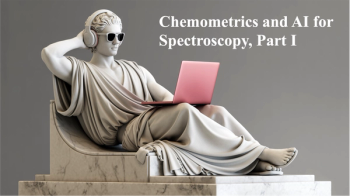
Advancing Laser Ablation Chemical Analysis
Rick Russo, the winner of the 2013 Lester W. Strock Award, is known for important advances in laser ablation for use in spectrochemical analysis. In a new interview, he talks about those developments, how his career developed, and what it's like, as a research scientist, to lead a start-up company.
An interview with Richard E. Russo, the winner of the 2013 Lester W. Strock Award.
Part of the 2013 podcast series presented in collaboration with the Federation of Analytical Chemistry and Spectroscopy Societies (FACSS), in connection with SciX 2013, the federation’s North American conference.
For more podcasts in this series from 2013 and 2012, visit
Richard E. Russo, PhD, is the scientific director of the Laser spectroscopy group at the Lawrence Berkeley National Laboratory (LBNL), in Berkeley, California, and the president and CEO of Applied Spectra, Inc.
Russo’s research group at LBNL pioneered the understanding and development of nanosecond and femtosecond pulsed laser ablation for chemical analysis. He is a co-inventor of the nanowire laser and developer of a real-time standoff laser ultrasonic sensor, which won an R&D 100 Award in 2006). He is also the inventor of a process for nano-texturing thin films (ITEX process) and the lead inventor of an assisted pulsed laser deposition process (IBAD).
Most recently, in his Berkeley research laboratory, with the assistance of Applied Spectra staff, he has demonstrated and patented the use of laser plasmas for real-time measurement of isotopes. The new technology, called laser molecular isotopic spectroscopy (LAMIS), won a 2012 R&D 100 Award and a
Russo has more than 240 scientific publications; 45 refereed proceedings; 310 presentations (215 invited); and nine book chapters. Fourteen students have received their PhD degrees under his direction at the University of Berkeley, and he has mentored numerous PhD students from international universities.
In 2004, Russo founded Applied Spectra, Inc. with the assistance of several of his PhD students from Berkeley. The company is a leader in chemical analysis using laser-induced breakdown spectroscopy (LIBS) and laser ablation with inductively coupled plasma-mass spectrometry (ICP-MS).
About the Lester W. Strock Award
The Lester W. Strock Award is given by the New England Section of the Society of Applied Spectroscopy in recognition of a selected publication of substantive research in or an application of analytical atomic spectrochemistry in the fields of earth science, life sciences, or stellar and cosmic sciences.
More about the SciX conference:
The traditional North American meeting of FACSS is now SciX - The Great Scientific Exchange. SciX covers the whole of analytical chemistry with an emphasis on emerging technologies. SciX carries on the FACSS tradition of a strong technical program (over 100 symposia), many prestigious awards, exhibits, a variety of workshops, an employment bureau and multiple social networking opportunities.
SciX is the National Meeting of the Society for Applied Spectroscopy (SAS) and the North American Society for Laser-Induced Breakdown Spectroscopy (NASLIBS).
For more information about the SciX 2013 conference in Milwaukee, Wisconsin, September 29 to October 4, 2013, visit
Follow Spectroscopy and FACSS on social media:
Newsletter
Get essential updates on the latest spectroscopy technologies, regulatory standards, and best practices—subscribe today to Spectroscopy.




